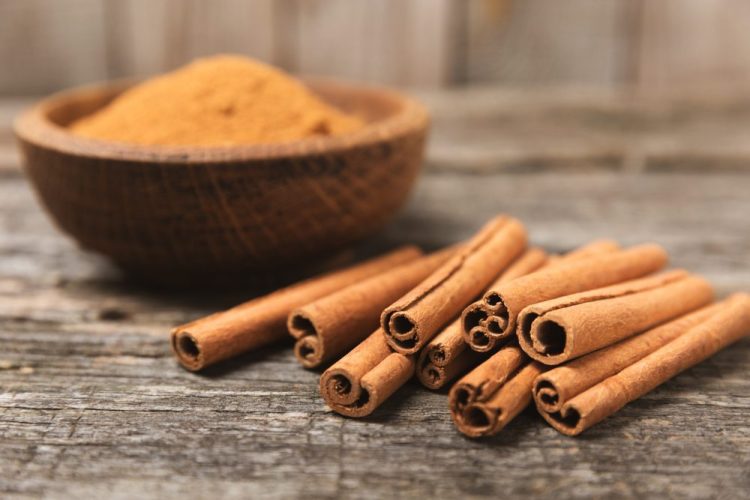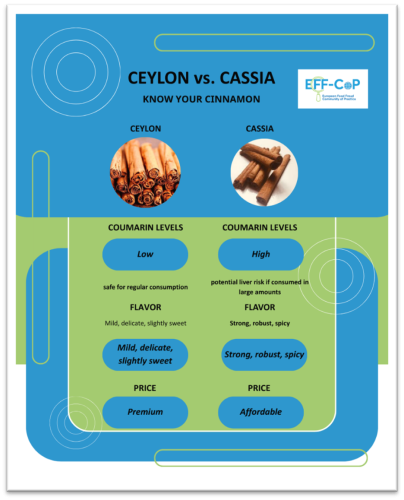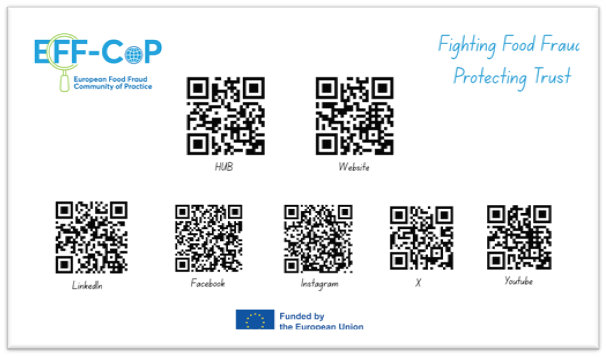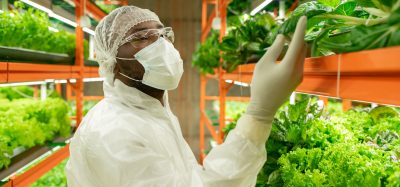The spicy truth: uncovering cinnamon fraud in the EU market
Posted: 6 November 2025 | Anastasia Vlachou | No comments yet
When you dust a little cinnamon over your cappuccino, the last thing on your mind is fraud. However, scientists at the European Commission’s Joint Research Centre (JRC) have uncovered cases of mislabelling that could lead to potential health risks, as Project Coordinator Anastasia Vlachou reveals.


Two cinnamons, one big problem
Cinnamon is a cultivar from the inner bark layer of different evergreen trees belonging to the genus Cinnamomum. Once the cinnamon bark is shaved from the tree stump, it naturally takes on a coiled shape. The processing method continues when the bark is dried, portioned into smaller segments for cinnamon sticks, or processed into a fine powder for ground cinnamon.
The trouble unfolds when Cassia is sold as true cinnamon. Consumers pay premium prices for what they believe is a pure, high-quality product and instead get something that could potentially pose a health risk, especially for children.”
There are two primary categories of cinnamon: Ceylon and cassia.
Ceylon (Cinnamomum verum), sometimes referred to as ‘true cinnamon’ originates from Sri Lanka and is the variety that initiated the spice trade when it was first discovered during the Age of European Exploration. It is valued for its delicate, warm, sweet yet spicy aroma and low levels of the potentially-toxic compound coumarin.1
The cassia category of cinnamon has three main varieties that relate to its place of origin: China (Cinnamomum cassia, or cassia), Vietnam (Cinnamomum loureiroi, or Saigon), and Indonesia (Cinnamomum burmannii, or korintje). Cassia has a stronger, sharper and more pungent aroma than true cinnamon, as well as a far higher coumarin content.


Ceylon vs Cassia cinnamon comparison
The trouble unfolds when Cassia is sold as true cinnamon. Consumers pay premium prices for what they believe is a pure, high-quality product and instead get something that could potentially pose a health risk, especially for children.
The JRC study tested cinnamon samples from 10 EU countries, the results of which were rather alarming since over two-thirds showed irregularities. Around nine percent of products labelled “Ceylon” turned out to be Cassia or a mixture of both. Of greater concern is that approximately one in ten samples exceeded the EU’s legal limits for lead.
Catching the cheats
Catching this kind of food fraud is not a simple process; it’s part science and part detective story.
To separate the genuine from the fake, researchers employed an impressive toolkit of testing methods:
- Energy dispersive X-ray fluorescence (EDXRF) to check the elemental composition
- FT-Raman spectroscopy to identify chemical fingerprints
- Gas chromatography-mass spectrometry (GC-MS) to detect tell-tale compounds like coumarin
- Thermo-gravimetric analysis to measure impurities.
Together, these techniques were able to paint a clear picture of authenticity – or lack thereof in many cases.
As with other types of food fraud or food safety investigation, not only was the scientific data impressive, but the dedication of the researchers collecting the samples was particularly striking. Teams of scientists were meticulous in tracing supply chains across continents, comparing bark samples and confirming suspicions one test at a time – such is the detail of work required to ensure that what we sprinkle on our food is safe and genuine.
Why it matters
This isn’t just a niche issue for spice lovers. Food fraud in all manner of ingredients and commodities undermines consumer trust, damages honest producers and, in some cases, endangers public health.
This cinnamon fraud may seem trivial to some, but it illustrates a bigger picture: when profit drives deception, everyone pays the price.”
This cinnamon fraud may seem trivial to some, but it illustrates a bigger picture: when profit drives deception, everyone pays the price. One of the most vulnerable groups in our society is children and the consumption of cassia with high coumarin levels could result in them exceeding recommended daily intake limits, even with just a small portion.
The economic impact is also a concern. Genuine Ceylon producers, many of whom are smallholders in Sri Lanka, lose out when fake products flood the market and indeed the integrity of the entire spice trade comes under question.
Building a culture of food integrity
There is however good news amid all the concerns around food fraud. The European Food Fraud Community of Practice (EFF-CoP) was formed to help tackle cases like this. It aims to connect scientists, regulators and industry experts with the ultimate goal of sharing knowledge, refining detection tools and fostering a culture where transparency is the rule, not the exception.
Minimising – and even eliminating in some cases – food fraud is a collective effort that extends beyond the lab and beyond countries; it involves everyone from importers and retailers to consumers who read labels and ask questions.
What’s next?
Fighting food fraud is not just a regulatory matter, it requires input at every level. We must stay alert, use smarter tools and better science, and ask more questions at every step of the food chain. In the case of cinnamon fraud, this extends from the cinnamon groves of Sri Lanka to the shelves of our local stores.
So next time you shake a little cinnamon onto your latte, pause for a second. That tiny sprinkle carries a story of farmers who harvest with care, of scientists working behind the scenes, and of regulators determined to keep our food honest. It’s a reminder that trust in what we eat does not just happen; it’s earned, one test and one spice jar at a time.
Learn more and join the EFF-CoP community
If you’re interested in learning more or becoming part of the European Food Fraud Community of Practice (EFF-CoP), visit the EFF-Hub, our virtual headquarters. You can also follow EFF-CoP updates and event news on our social media channels to stay connected with Europe’s growing network of food integrity experts.


Footnote
- Coumarin (benzo-α-pyrone) is a naturally occurring substance found in a wide variety of plants with pleasant flavour (tonka bean, vanilla, woodruff, etc), including citrus fruits or green tea, but the main source of coumarin in the human diet is cinnamon. Although rare in humans, high doses of coumarin can cause mild side effects like dizziness, diarrhoea and vomiting, while studies in rats and mice have linked it to liver tumours and lung toxicity. The European Food Safety Authority (EFSA) has set a tolerable daily intake limit for coumarin at 0–0.1 mg per kg of body weight, based on differences in metabolism between humans and rodents.
Bibliography
- Commission finds fraud and potential safety issues in cinnamon on the EU market, 2025. Available at: https://joint-research-centre.ec.europa.eu/jrc-news-and-updates/commission-finds-fraud-and-potential-safety-issues-cinnamon-eu-market-2025-09-24_en
- Detection of fraudulent practices in commercially available cinnamon, JRC Publications Repository, 2025. Available at: https://publications.jrc.ec.europa.eu/repository/handle/JRC142672
- Cinnamon: A complete guide to types, flavors, and how to use them, 2021. Available at: https://www.kingarthurbaking.com/blog/2021/11/04/cinnamon-a-complete-guide-to-types-flavors-and-how-to-use-them
- Assessment of Coumarin Levels in Ground Cinnamon Available in the Czech Retail Market, 2012. Available at: https://pmc.ncbi.nlm.nih.gov/articles/PMC3385612/
About the author:


Anastasia Vlachou, Project Coordinator – Physicist & Applied Mathematics MSc
A results-driven project manager with extensive experience in European research and development projects, Anastasia excels in guiding cross-border teams through complex, high-stakes initiatives. Her background combines technical expertise in applied mathematics and physics with a practical focus on aligning project outcomes with stakeholder needs.
Anastasia’s professional development includes an impressive range of certifications across diverse areas, such as digital marketing and environmental and project management. Currently managing multiple projects for Rezos Brands, she specialises in steering projects from proposal to successful execution, ensuring regulatory compliance and managing budgeting and reporting.
Related topics
Food Fraud, Food Safety, Health & Nutrition, Ingredients, Quality analysis & quality control (QA/QC), Regulation & Legislation, retail, Supply chain, Traceability, Trade & Economy, World Food









